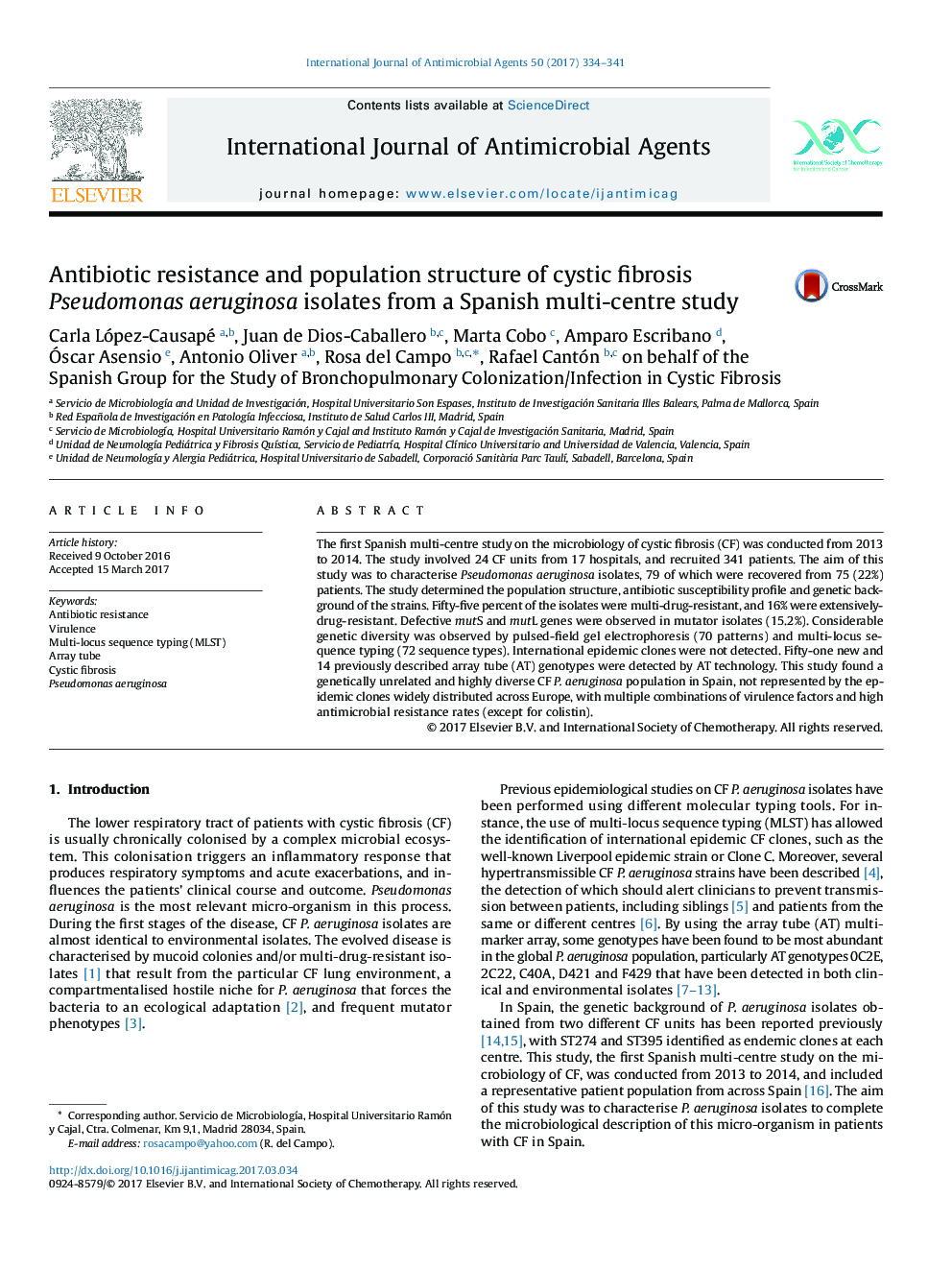| Article ID | Journal | Published Year | Pages | File Type |
|---|---|---|---|---|
| 5666786 | International Journal of Antimicrobial Agents | 2017 | 8 Pages |
â¢High antimicrobial resistance rates among the Spanish cystic fibrosis Pseudomonas aeruginosa.â¢Low genetic relationship among isolates.â¢Lack of international epidemic clones.
The first Spanish multi-centre study on the microbiology of cystic fibrosis (CF) was conducted from 2013 to 2014. The study involved 24 CF units from 17 hospitals, and recruited 341 patients. The aim of this study was to characterise Pseudomonas aeruginosa isolates, 79 of which were recovered from 75 (22%) patients. The study determined the population structure, antibiotic susceptibility profile and genetic background of the strains. Fifty-five percent of the isolates were multi-drug-resistant, and 16% were extensively-drug-resistant. Defective mutS and mutL genes were observed in mutator isolates (15.2%). Considerable genetic diversity was observed by pulsed-field gel electrophoresis (70 patterns) and multi-locus sequence typing (72 sequence types). International epidemic clones were not detected. Fifty-one new and 14 previously described array tube (AT) genotypes were detected by AT technology. This study found a genetically unrelated and highly diverse CF P. aeruginosa population in Spain, not represented by the epidemic clones widely distributed across Europe, with multiple combinations of virulence factors and high antimicrobial resistance rates (except for colistin).
